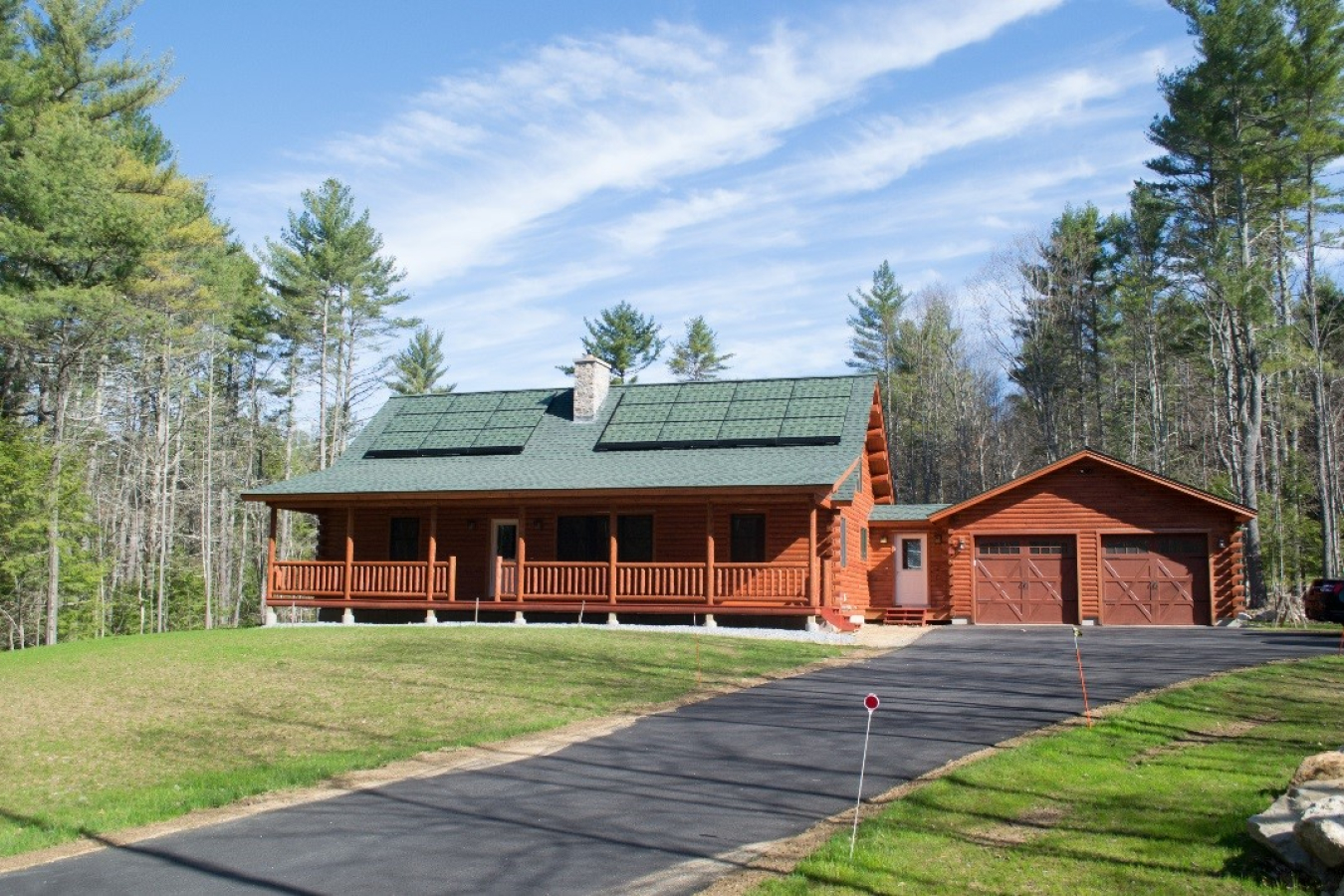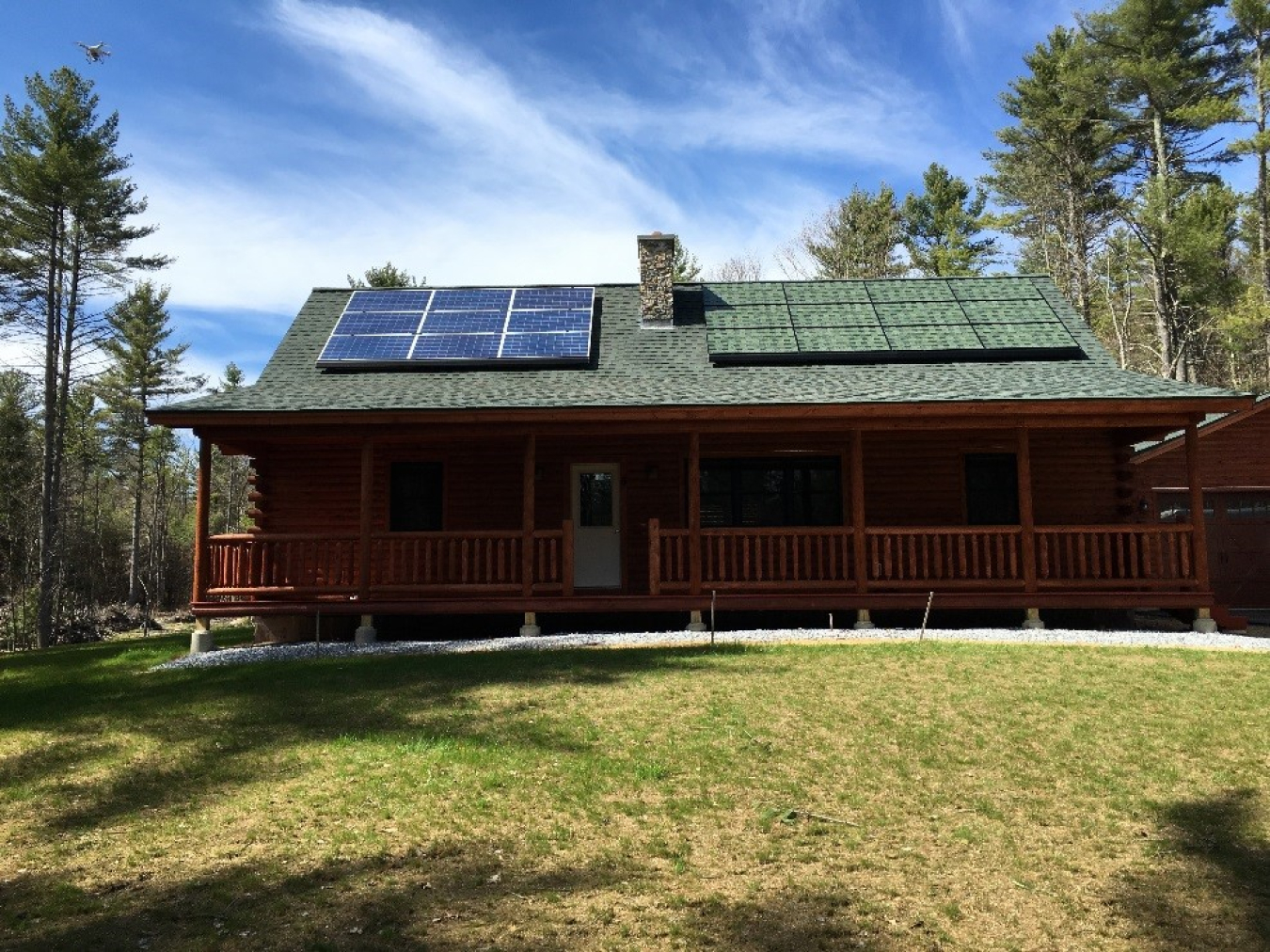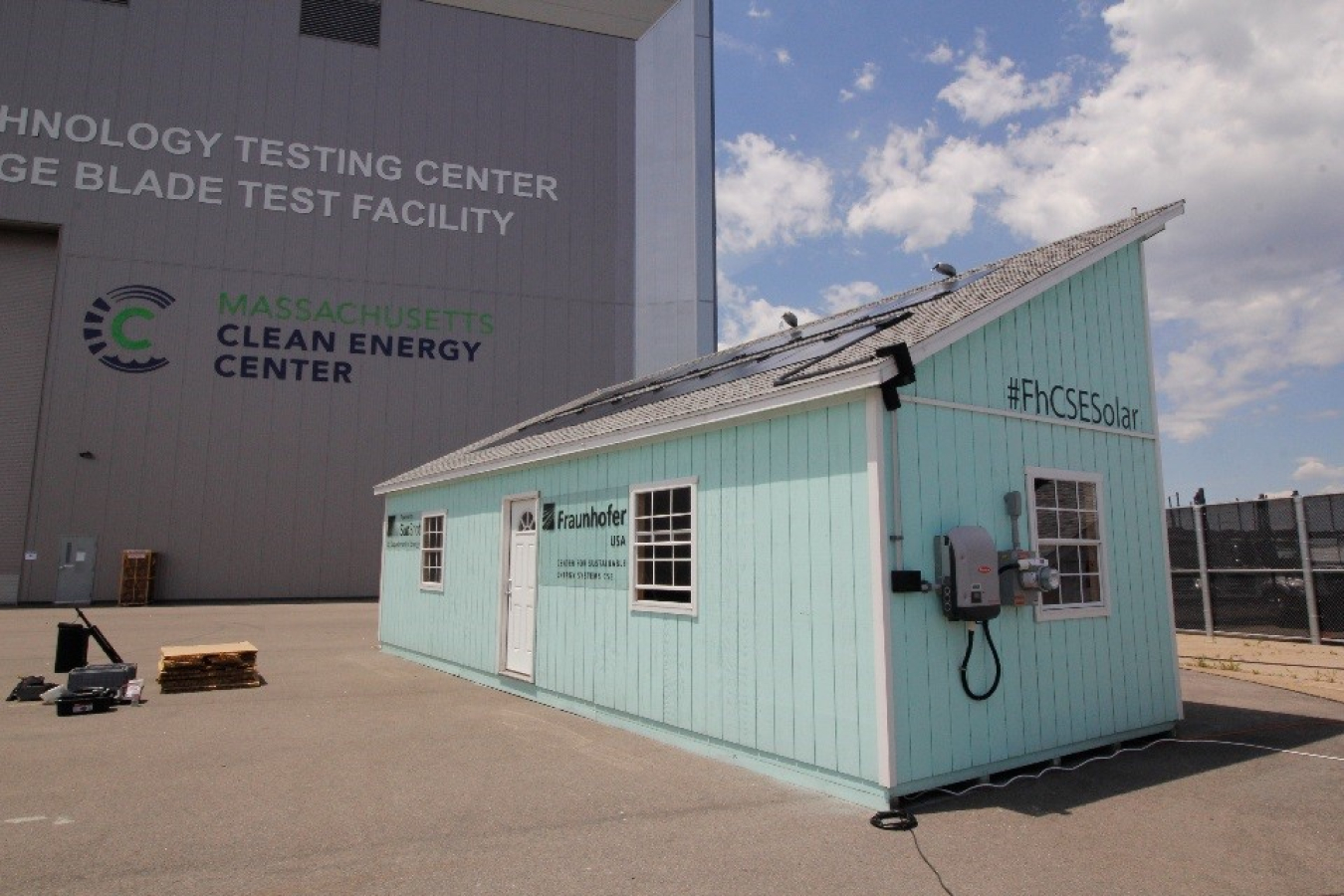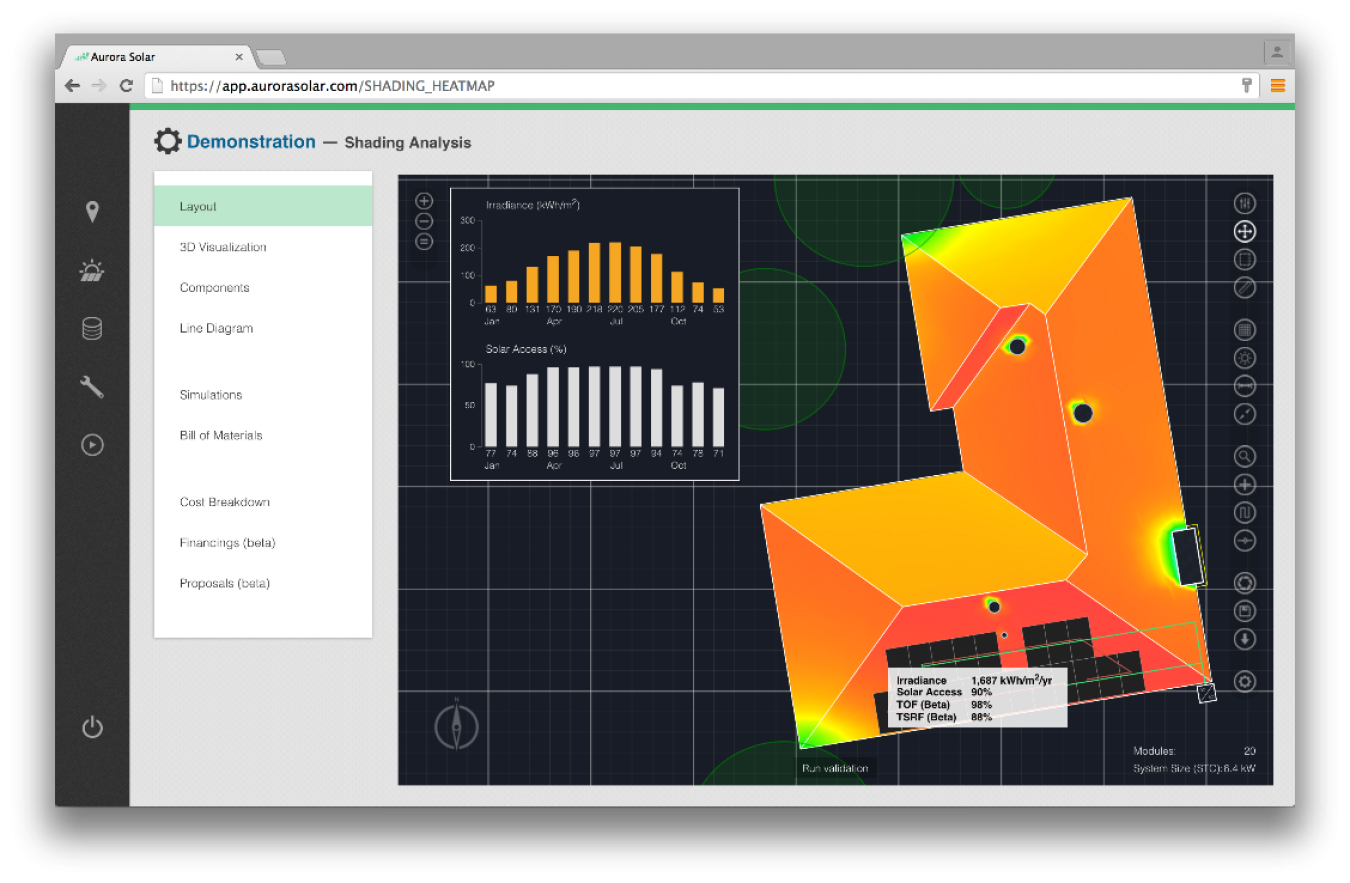
Sistine Solar’s completed SolarSkin installation on a Katahdin log cabin. The company’s SolarSkin panels seamlessly blend in with the cabin’s green roof. | Photo Courtesy of Sistine Solar

This shows side-by-side comparison shows traditional solar panels and Sistine Solar’s new SolarSkin panels. The blue panels on the left are a stark contrast to this log cabin’s green roof while the color match solar panels on the right blend in with the green roof. | Photo courtesy of Sistine Solar

Pictured above is the Fraunhofer Center for Sustainable Energy Systems’ Plug and Play demonstration site. | Photo courtesy of Fraunhofer

Aurora Solar’s new technology provides 3-D modeling simulations, shading analysis, and financial analysis for customers. | Photo courtesy of Aurora Solar
Editor’s Note: This blog post is part of the SunShot Initiative’s series on solar and real estate. Read all the posts here.
Flying cars, house-cleaning robots, and 3D-printed food may have seemed like part of the distant future when “The Jetsons” first aired, but less than a century later we have Roombas, driverless cars, and 3D printers making edible prints. Some clean energy analysts thought that solar would be a part of our distant future, but now that it’s powering more than 1 million solar installations and employing 209,000 people and counting, it’s clear that solar is here and now.
The SunShot Initiative fosters innovation, challenging the recipients of our funding to bring next-generation technologies to the market in just a few years. These new technologies can give homeowners more choices for how they want to go solar while also having a major impact on cost and ease of installation. These homeowners will save on their electricity bills for years to come, and on average can expect to add $15,000 to the value of their home and sell their home faster than comparable homes without solar.
Here’s a look at some of the groundbreaking technologies that will soon enable more homeowners to sell or refinance their home for a premium.
Color Match Solar Panels
Since adding solar to a home changes its appearance, some homeowners worry that going solar may break strict housing association rules or make it hard to sell their home, so they’re unable or unwilling to make the switch to solar. As a result, they miss out on the benefits of solar. Thanks to SunShot Incubator awardee Sistine Solar, these homeowners may soon have a solution.
Sistine Solar’s new solar panels—called SolarSkin—can mimic the color and pattern of a rooftop and even display illustrations. Whether a customer wants the solar panels to imitate a Spanish style tile roof, a log cabin, or make an artistic statement, the company can add a customizable graphic layer to solar panels without compromising panel efficiency. Under their SunShot award, Sistine Solar is developing a fully-tested, verified, and certified product that’s ready to enter the market.
The company recently completed an installation for a log cabin home and is expecting to launch its product in 2017.
Do-It-Yourself Solar
If you prefer DIY home improvements, you can save on the high soft costs, such as permitting and installation labor, which can make it difficult for some homeowners to switch to solar. New SunShot-funded projects could help homeowners save on installation costs and put solar in reach for many more families.
As a part of its SunShot Plug—and-Play award, the Fraunhofer Center for Sustainable Energy Systems is creating a kit that allows homeowners to safely and quickly set up a rooftop solar system like they would a new appliance. The new kit self-tests for proper installation and can communicate with a local jurisdiction and utility to request permission to go online. The kit—currently a prototype set to debut in fall 2017—also makes it easier to permit, inspect, and interconnect a system, saving homeowners time and reducing the current average cost of photovoltaic system installation by 62%.
SafeConnect Solar is also helping homeowners save money on installation by making parts of a residential solar system safer and faster to install. Called a SmartBox, SafeConnect Solar’s device standardizes assembly, checks for compliance with electric codes and standards, and can even shut down a solar system if electrically unsafe conditions occur. Compliance costs and the need for specialized personnel like electricians are all tacked onto the cost of owning a solar system, and beginning in 2017, the SmartBox could help to alleviate these costs.
Mapping Your Own Solar Future
Most homeowners are unsure about how to go solar, let alone how to determine their home’s eligibility for solar. New technology from SunShot Incubator awardee Aurora Solar can instantly determine the solar potential of a property using as little as an address and information from an electric bill. Aurora Solar’s app can create a custom, 3D system design, conduct a detailed shading analysis, provide advanced engineering support, and show customers financing options and the savings they’ll experience by going solar. Already being used by solar installers across the country, this new technology can help customers visualize what a solar system would look like on their property while also helping them figure out how solar can save them money.
Learn more about the SunShot Incubator program that’s driving many of these innovations, or about other ways solar can benefit homeowners.

